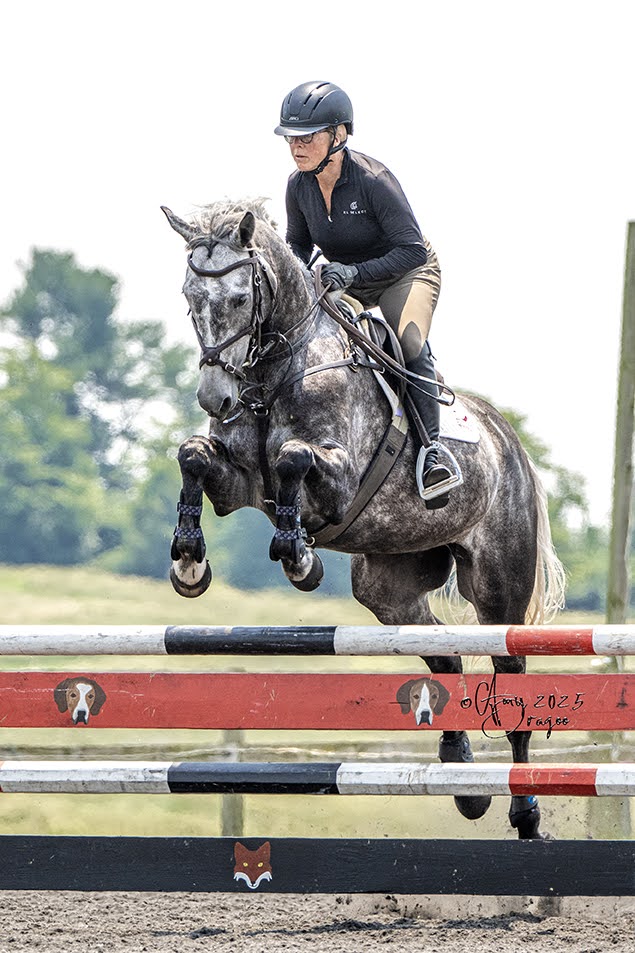
Pixabay/CC
I was recently inspired to write this following a conversation with my dear friend who is just diving — perhaps I should say cannon-balling — into horse ownership for the very first time. She had no previous experience with horses until last year, when her 13-year-old daughter began taking lessons.
Quite happily half-leasing my lovely mare, my friend was gradually wading into barn-life, one inexperienced toe at a time. She was pleased to see her daughter happy during lessons and content to shed any horse-related questions or concerns alongside her muddy boots until the following week’s session.
All that changed when an acquaintance — who had seen pictures of her daughter on Facebook riding a fabulous jet-black beauty — contacted her with a “special opportunity.”
This acquaintance was moving and needed a new home for her gelding.
Of course, my friend, having limited knowledge of horse-keeping, let alone how one determines whether or not an animal is healthy and of good temperament and would be suitable for a beginner like her daughter, did what most people would do when faced with a gift horse…
She put up a fence and built a lean-to.
Many of us take for granted the little things that occur while owning and caring for a horse, forgetting that inexperienced (adorably optimistic) beginners aren’t familiar — yet — with many of those normal horsey “events.”
Which brings me to the conversation (via texts) with my friend:
Friend: “Oh my gosh!!! When we went out to the pasture this morning, we found Novio [the gift-horse] with his feet like this…
[insert pic of rear hooves with white lines visible on coronary bands] …
“My uncle is visiting and he said he thinks it’s White-Line disease…”
[…continued expressions of dread…]
It had been raining for several days, and as Novio isn’t stabled, I explained that the white-ish band was a perfectly normal result occurring when a horse has his feet wet for an extended period of time. Crisis averted. But not before the bewildered gelding received a Clorox wash recommended by out-of-town-uncle-who-once-worked-with-a-guy-whose-brother-had-horses. Oy.
The thing is, when you don’t know for yourself, it’s quite natural to accept the advice of someone with more “experience.” However, confirming said expertise before using Uncle Jim-Bob’s peppermint-and-moonshine remedy is definitely a wiser course of action (and all the horses say amen).
Before you scoff at my silly friend… let’s be honest, most of us have experienced similar situations along our own journeys.
The thing is — I didn’t write this to shame my friend. It’s more of a friendly reminder for those of us in the equine “been there, done that” crowd to reflect on our days as “newbies” and the horsey-freak-outs we experienced ourselves… so we can encourage our beginner pals instead of rolling our eyes at them.
It’s also a salute to those “new-to-horses” folks, for recognizing a special passion and being brave enough to build a barn in their backyards.
SO, to you moms who do not have the horse-bug, but whose children definitely do…
Thank you.
Without those of you — like my newbie-friend — willing to plunge into this crazy world of saddles, helmets, fences, and farriers, there would be kids sitting at the beginning of their journey with bags packed full of passion flung on the dusty ground beside them.
Without someone to care enough to “book the trip,” these young people, born with an invisible link between horses and themselves, wouldn’t have the chance to even begin their greatest adventure.
I was one of those kids on that platform of dreams! My parents knew nothing about horses, but they understood that my heart would know its most happy state only if I could fill it with horses.
And here’s to all the “later-in-life-newbies,” just beginning their own journey with these amazing animals. All the accompanying highs and lows will no doubt make you laugh and cry (a lot)… good luck and hang on tight!
Now for those of you who eat, sleep and breathe all things horse, who have more pictures of old Lightning than of your children, and whose car retains hint-of-barn no matter how many air fresheners you have dangling from the mirror… if you know a newbie who ends up in a “free horse” situation, or does the proverbial leap before looking when buying one… try not to have your first observation be that the horse is slightly pigeon-toed, or that they’re totally gonna need a trainer, when the amateur calls upon you for advice.
Instead, try to help this person make the best choices they can, knowing that soon enough they’ll find out if the horse really is the best gift ever, not suitable at all, or indeed, if they even want to stick with the whole “horse thing.”
Whatever happens, offer kind advice, remembering that not all people are horse people like you, but everyone should have the right to hop aboard the Equine Express, even if it’s only for a brief trip or they are just traveling as baggage attendants (the boot polishing, hair braiding, girth tightening mommas).
Be patient and understanding… especially when the newbie calls in a tizzy over the tiny yellow things stuck on their horse’s legs, or when she discovers the chestnuts and assumes they are tumors.
Sometimes all you can do is laugh and then thank the good Lord that your newbie days have long since passed.
Go riding.

Pixabay/CC
Sara Shelley is a writer, who enjoys her family of “nineteen” (husband, three kids, one horse, one dog, three cats, six chickens, a turtle and three fish) surviving the resulting chaos only through faith, and a well-developed sense of humor. She spends as much time as she can riding her horse, and making memories with her clan.


































